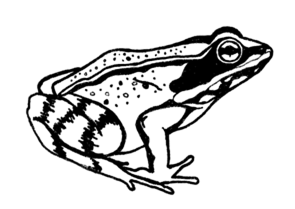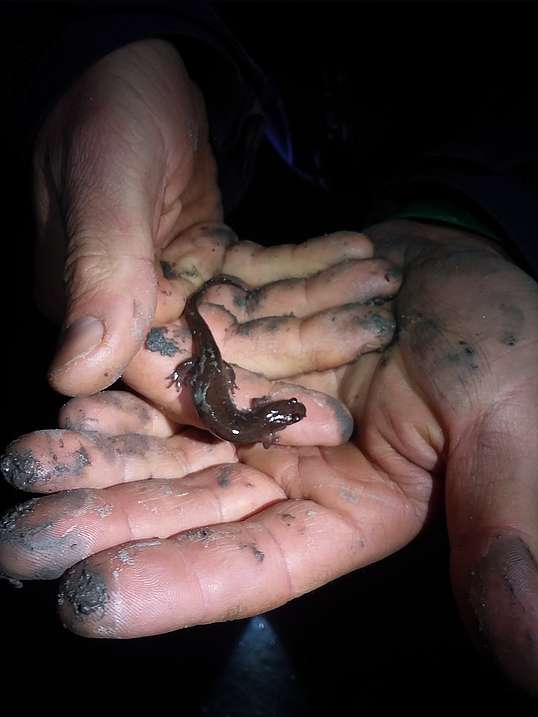by Nicole, AmeriCorps Lands & Trails Steward
Naturalist Corner: Why Did the Amphibians Cross the Road?

Big Night(s)
As winter recedes and spring’s warmth unfurls across the landscape, an ancient and sometimes unnoticed migration begins—one so large that it’s referred to as “Big Night.” Triggered by the first warm, rainy nights of spring, amphibians hidden in Vermont’s upland forests and beyond start their journeys to vernal pools.
The word “amphibian” comes from the Greek word amphibios, meaning “living a double life” between water and land. Each spring, hundreds of thousands of amphibians—including spotted salamanders, wood frogs, Jefferson salamander, and blue-spotted salamanders—emerge from their overwintering sites under downed wood, buried in leaf litter, or in tunnels, often returning to the same vernal pool where they hatched. Amphibians undertake impressive migrations relative to their size. A wood frog’s round trip to and from a vernal pool can easily span a quarter mile (when adjusted for bodyweight, this is like humans walking the 2,600-mile-long Pacific Crest Trail!). This journey is driven by the instinct to breed, but it is also a matter of life and death, as they navigate roads, paths, and other human-made and natural barriers to reach their breeding grounds.

Amphibian Crossing Night with Stowe Land Trust
This year, we invite you to take part in an incredible experience—Amphibian Crossing Night with Stowe Land Trust (SLT). On this special night, you’ll help guide amphibians safely across the road, collect valuable data for the North Branch Nature Center’s Amphibian Crossing Program, and contribute to ongoing research on local amphibian populations.
The timing of “Big Night” is weather-dependent, as amphibians only move on wet, dark spring nights when temperatures are above 40 degrees. To participate, sign up here, and we’ll notify you two days in advance of the event with more information and to RSVP.
Data collected during the event will be shared with the Vermont Reptile & Amphibian Atlas, the Vermont Agency of Transportation, and the Vermont Center for Ecostudies, as well as with town planners and conservation commissions. Your participation will directly support ongoing conservation efforts and help ensure that future generations of amphibians can make their remarkable journey each spring.

Slow Down, Big Nights Ahead
On warm, wet spring nights, consider heading home before dark. If you’re driving on a "Big Night," be aware of amphibians crossing roads and slow down to avoid them if feasible. Do you know that certain roads are amphibian hot spots in your community? If possible, avoid driving in amphibian hot spot zones—or stop and help them cross if it is safe to do so!